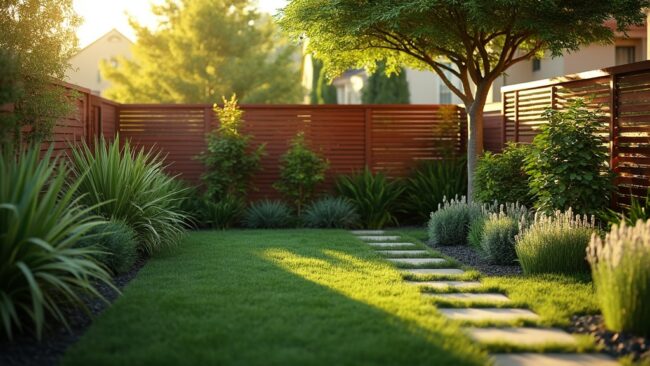
What Are Stair Risers and Why Should You Care?
If you’re planning new steps for your garden, patio, or front entryway, the term “stair riser” might have come up. While most people focus on the flat part of a step—the tread—the riser is the vertical section that gives each stair its height. It’s the part that supports the tread above it and helps determine how comfortable and safe your stairs feel.
Risers may seem like a small detail, but they have a big impact on the way your stairs look and function. They’re essential to maintaining structural integrity and making sure each step feels consistent as you move up or down. When risers are done well, they often go unnoticed. When they’re poorly made or uneven, they become very noticeable for all the wrong reasons. If you’re looking to upgrade or install outdoor steps, you’ll want to consider materials that are designed to last—like the stair treads available from Paving Supplies, which are made to withstand Australia’s outdoor conditions.
The Purpose of Stair Risers in Outdoor Areas
In outdoor construction, stair risers play an essential role in more than just supporting steps. They also help define the rise of each stair, which affects both usability and safety. A staircase without risers, or with risers that vary in height, can quickly become frustrating to use—or worse, dangerous.
Outdoor risers are constantly exposed to the elements, from sun exposure and rain to temperature fluctuations and soil movement. A strong, consistent riser helps keep the structure together even when the ground shifts slightly or when the stairs are regularly used. Without this support, the staircase may weaken over time, leading to uneven steps, wobbling, or cracks.
Risers also help guide water away from the structure, depending on how they’re integrated into your landscaping. This can prevent pooling at the base of stairs and help extend the lifespan of the materials.
The Importance of Uniform Riser Heights
One of the most important elements in any set of stairs is consistency. If you’ve ever walked up a set of steps where one was noticeably higher or lower than the others, you know how jarring it feels. Uneven riser heights are not just annoying—they can also be a real tripping hazard.
In Australia, stair construction must follow specific codes that recommend riser heights between 150mm and 180mm, with very little variation allowed between steps. This ensures a smooth, predictable walking experience. Even a difference of five millimetres can throw off someone’s balance, especially when carrying something or walking in low light.
Whether you’re building stairs to a deck, down into a yard, or between different levels of a garden, consistent riser height is non-negotiable if you want a safe and comfortable result.
How to Choose the Right Material for Stair Risers
Outdoor stairs need to withstand more than just foot traffic. Depending on your location, your stair risers might face harsh sun, driving rain, or salty sea air. That means the material you choose for your risers should not only look good but also perform well in challenging conditions.
Concrete risers are a popular option because they’re strong, low-maintenance, and available in uniform sizes. They’re especially suited for modern or minimalist homes, where clean lines and neutral tones are preferred. If you’re looking for something more natural or earthy, stone risers offer a timeless look that blends beautifully with outdoor environments. While stone may cost more upfront, its durability and visual appeal make it a worthwhile investment for many homeowners.
Brick or clay risers add a rustic charm and are particularly fitting for older homes or garden stairs. These materials often offer good traction and weather resistance, though they can require a bit more care in installation to ensure stability.
Some risers come with textured finishes that improve grip underfoot and reduce slipping in wet conditions. These are especially useful in shaded areas, pool surrounds, or places where stairs might get slippery during rain.
Matching Stair Risers to the Australian Climate
Australia’s climate can vary dramatically from region to region. In coastal areas, materials must be able to handle salt and humidity without degrading. Concrete and natural stone both perform well here, especially when properly sealed. Inland, where the sun can be intense and dry conditions prevail, UV resistance becomes a higher priority. Look for risers that won’t fade or become brittle after prolonged sun exposure.
In wetter climates, stair risers need to have good drainage integration and a slip-resistant surface. Materials that absorb water or develop mould won’t hold up well over time. Choosing outdoor-specific products ensures your risers are made to handle the local environment while maintaining their integrity and appearance.
How Stair Risers Impact the Look of Your Home
Risers aren’t just structural. They have a major influence on how your stairs look. A matched tread and riser combo offers a sleek, seamless look, while contrasting materials can highlight the shape and design of your stairs.
Some homeowners choose darker risers to add depth or define the edges of each step. Others might opt for a softer look that blends into the surrounding pavers or walls. Textured finishes can add visual interest as well as safety. In a space like a garden or courtyard, the style of your risers can help bridge the gap between hard landscaping and softer natural elements.
Whether you want your stairs to stand out as a design feature or blend in quietly, your riser choice plays a central role in achieving the effect.
Can You Install Stair Risers Yourself?
If you’re handy and the job is straightforward, installing stair risers on your own may be doable. Projects on level ground with modular precast risers are usually the most manageable for DIYers. If you’ve done basic landscaping or paving before, this kind of project could be within reach.
However, not all stair installations are simple. If your site has a slope, connects to a retaining wall, or requires custom dimensions, it’s wise to bring in a professional. Builders and landscapers can ensure your risers meet code, are properly aligned, and are integrated into the surrounding structure for long-term stability.
Council regulations may also come into play, especially if the stairs are attached to a deck or balcony. It’s always better to check first and avoid problems later.
Stair Riser Installation Tips That Make a Difference
Precision is everything when it comes to stair installation. You’ll want to begin with a compacted base that provides a stable foundation. Each riser should be measured and placed carefully to ensure even spacing. Adhesives or mortar should be applied according to manufacturer instructions, and the alignment of both treads and risers should be checked as you go.
Water drainage is often overlooked but is critical for outdoor stair longevity. Make sure the area around the risers slopes slightly to direct water away, and avoid creating spots where water can pool or seep into the materials.
Attention to detail during installation will pay off in the form of a staircase that feels solid, safe, and looks professionally done.
Final Thoughts on Choosing and Installing Stair Risers
Stair risers might not be the first thing that comes to mind in a landscaping project, but they’re one of the most important components when it comes to structure, safety, and style. A well-chosen riser makes every step feel predictable and secure, while also enhancing the overall look of your stairs.
Whether you’re updating an existing stairway or building from scratch, paying attention to riser height, material selection, and installation technique will make a lasting difference. Your outdoor space deserves more than just a quick fix. It deserves a staircase that feels good to walk on and looks good for years to come.
